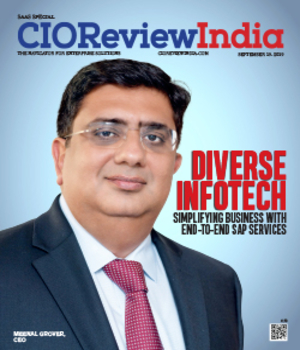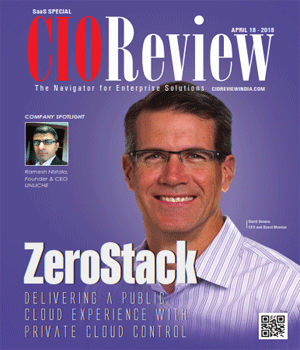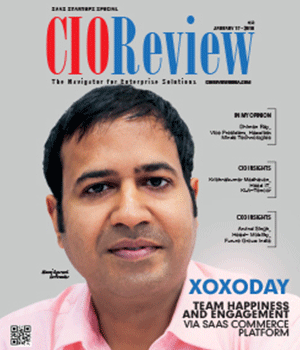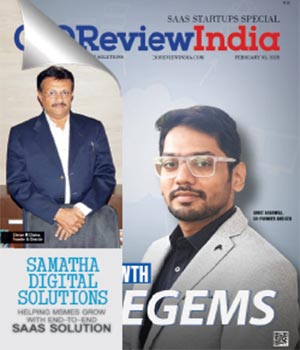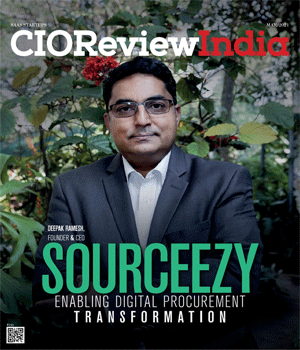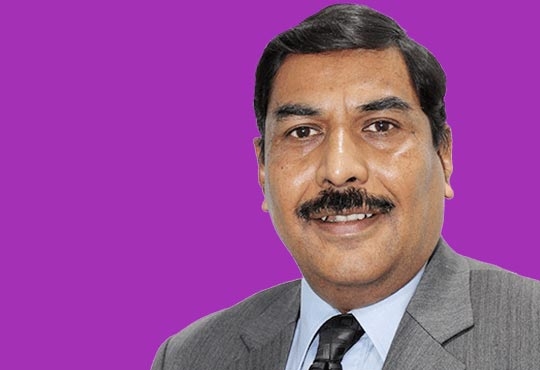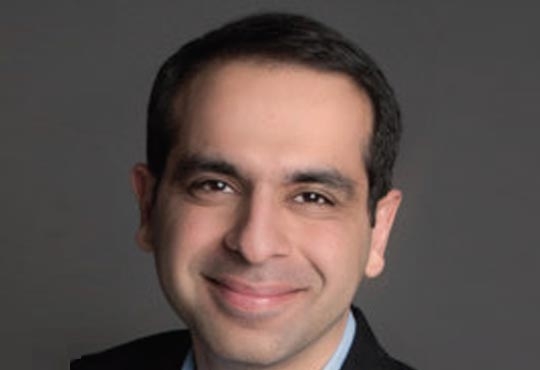
FC Kohli and the Eureka Moment of India's Software Industry
CIOReviewIndia Team | Friday, 27 November 2020, 18:36 IST
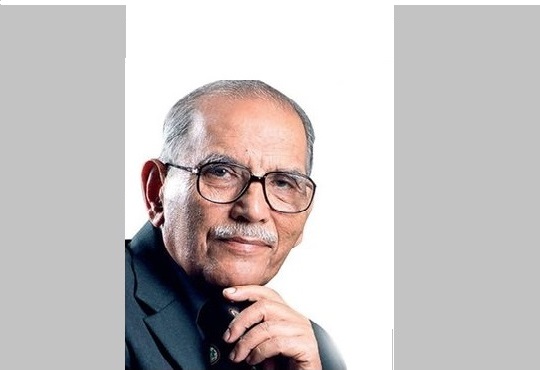 Popularly known as ‘Father of the Indian Information Technology Industry’, Faqir Chand Kohli (FC Kohli), aged 96, passes away in Mumbai on Thursday, November 26, 2020. He has been the true leader of the Indian information technology sector, a witness of the Eureka moment of information technology in 1974. Driving by the vision of the Indian information technology seating at the throne of this sector, FC Kohli thrived at every inch of the technology innovation, and fulfilled his dream in a lifetime.
Popularly known as ‘Father of the Indian Information Technology Industry’, Faqir Chand Kohli (FC Kohli), aged 96, passes away in Mumbai on Thursday, November 26, 2020. He has been the true leader of the Indian information technology sector, a witness of the Eureka moment of information technology in 1974. Driving by the vision of the Indian information technology seating at the throne of this sector, FC Kohli thrived at every inch of the technology innovation, and fulfilled his dream in a lifetime.
From the 1950s till the 1970s, the Indian data processing industry was ruled by the two multinationals – the American IBM and the British ICL. And from the 1970s, FC Kohli steered reverse, and made the decade favor India. IBM and ICL, the only suppliers of data-processors, where the mainframe computers by these multinational companies were used in large government function like the railways, and industry houses like the Tatas, and the Birlas, as the Indian firms were dependent on importing used machines, assembling them in the country, and later leasing them out to the users at excess prices.
It was a period when an audit performed by the Comptroller and Auditor General uncovered malpractices in invoicing and pricing, including other, dismantles, the government of the time passed the task to the newly formed Department of Electronics.
Meanwhile, FC Kohli was working as the deputy general manager in Tata Electric Companies, and was shifted in late 1969 to Tata Consultancy Services (TCS) as General Manager. Established in 1967, TCS as Tata Computer Centre, for completing the data processing work of all companies belonging to the Tata Group.
Alongside this, Lalit Surajmal Kanodia, Nitin Patel, and Ashok Malhotra, the three management graduates from the Massachusetts Institute of Technology (MIT), who had the internship experience with the Tatas, and completed a project report on data centers, were asked to implement their ideas.
A post-graduate from the Indian Statistical Institute, Yashpal Sahni, was another founding member, and Kohli succeeded Kanodia in 1969.
At one time in an interview, Kohli had recollected, “I was happy in Tata Electric and was reluctant to leave it, but I was asked to take charge of the new venture for a year.”
However, TCS faced several challenges, with group companies not agreeing to part with their data-processing functions. Kohli then realized that he had to search for proper business opportunities outside group companies. He succeeded in 1971 by onboarding Bombay Telephones as TCS’s first external customer. As part of a project, funded by the World Bank, Bombay Telephones wanted to digitize the telephone directory.
Though the Indian market was ruled by IBM and ICL. The companies supplied both the mainframes, and proprietary software. Kohli had to work around this system for entering the market, and he decided to work with Burroughs, which was IBM’s arch-rival during that time. Kohli utilized his MIT alumni, and networks, via the Institute of Electrical and Electronics Engineers, in academic and commercial circles. Kohli connected with the Burroughs. In between 1972 and 1974, Kohli visited the United States at least nine times. He got a breakthrough in the form of a contract from Burroughs, for writing OS software for a new series of mainframes that Burroughs was working on.
Kohli agreed and signed the deal, however, TCS engineers in India didn’t have a Burroughs mainframe for the software development. The engineers only had an ICS 1903 series machine. But, tet again, the Indian engineers proved their superiority with an advanced software filter for making ICL OS software work on Burroughs’ platform. As there were no data communication links during the period, so, from Bombay, the developed code was shipped to the United States, where the codes were tested with success. It was the ‘Eureka’ moment for both the Burroughs and for Kohli.
Kohli had described his experience, saying, “Burroughs had come out with a new series of the machine which could be programmed to make it as efficient for FORTRAN as in COBOL. All operating system of Burroughs computers was written in a higher language, Algol, and not in assembly language. We did not have a Burroughs machine in India – importing one would have taken two years. So we developed it on an ICL machine which we had. We designed a very advanced software filter for filtering from ICL to Burroughs machine. It was tested in the US and it worked. This convinced Burroughs that we can do something out of the box. Burroughs bought that piece of software to migrate many ICL machines to Burroughs in the UK – and we were in business.”
This was a big step towards software development industry rise in India, as local engineered software was exported to the American soil successfully. Through this, Kohli and TCS, entered into the United States market. Rather than a gradual growth, it was geared fast, as contracts overflowed to TCS, even from the Detroit Police, the City of Detroit, the State University of New York, from banks, and many alike.
Software developed by the TCS engineers for customers of Burroughs mainframe in India as well as other countries. Tata and Burroughs further entered into manufacturing peripherals in India, and established a separate software unit called Tata Burroughs Limited, which alongside TCS remained India’s top software exporter for quite a long time.
Envisioned as a great opportunity for the Indian software industry by Kohli in 1975, even though the policy environment at that time was highly unfriendly to industry, he addressed the annual meeting of the Computer Society of India at Ahmedabad in 1975, saying, “There was an industrial revolution. We missed it due to reasons beyond our control. Today, there is a new revolution – a revolution in information technology, which requires neither mechanical bias nor mechanical temperament. Primarily, it requires the capability to think clearly. This we have in abundance. We have the opportunity to participate in this revolution on an equal basis – we have the opportunity, even, to assume leadership in this revolution. If we miss this opportunity, those who follow us will not forgive us for tardiness and negligence.”
The Indian software industry is thankful to Kohli, who dedicated his talent and life to achieving a greater reality.
CIO Viewpoint
2020 To Be A Trendsetting Year For The SaaS...
By Abhilash Garg, VP IT (SaaS), DMI Financial Private Limited
Baseline It Transformation In Digital Era
By Shibin Chulliparambil, Head of IT, Mafatlal Industries Limited
Scenarios And Challenges In Personal Data...
By Ajay Kumar, Group Head IT, Polyplex
CXO Insights
The Rise Of Developer-LED Innovation And...
By Subrato Bandhu, Regional Vice President, OutSystems
Four Questions To Answer Before Considering A...
By Shrikant Navelkar, Director, Clover Infotech
3 Focus Areas For An Autonomous Driving Revolution



